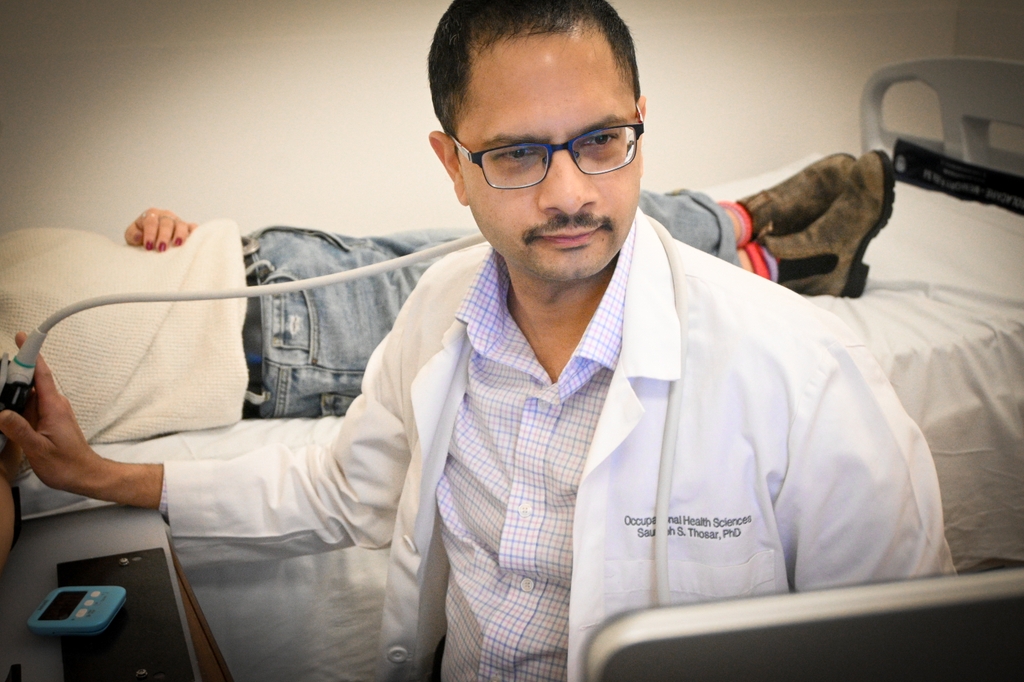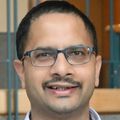
Saurabh Thosar, Ph.D., is discovering how sleep tugs at the heart.
More specifically, he's a sleep scientist at Oregon Health & Science University whose background in occupational therapy and cardiac rehabilitation inspires him to learn how circadian rhythms affect the leading killer in the U.S. and the world — cardiovascular disease.

"Most heart attacks occur in the morning, within three or four hours of people waking up," he said. "We don't really know why that is. Our goal is to better understand how sleep and the internal body clock affect heart health."
To that end, he is leading a research project currently underway at OHSU involving people with hypertension spending five days and nights in a sleep lab.
Researchers collect data day and night, continually monitoring each participant's blood pressure, heart rate and blood vessel function at rest and after common stressors such as exercise. Without a clock on the wall, Thosar and his research team — consulting with OHSU clinical experts in cardiology, psychiatry and nephrology — will discern participants' natural circadian rhythms and their relationship to underlying measures of health.
Long term, he expects this kind of research will result in evidence-based recommendations to improve health. One example is better timing of blood pressure medication.
"You may not need to take medication multiple times a day," he said. "It may be possible that existing drugs can be tailored to specific times when they provide the most benefit. This is the 'blue sky' view."
Thosar grew up in India, where he studied biology before going on to work as an occupational therapist.
His work rehabilitating patients in cardiac inpatient units sparked a deeper interest in the physiology of clinical exercise. Although he knew the clinical practice well, he wanted to learn more about how to conduct research and, after moving to the United States, earned a master's in movement sciences from the University of Illinois at Chicago, after which he did a fellowship in the Preventive Cardiology and Rehabilitation Department at the Cleveland Clinic. Subsequently, he went on to earn his Ph.D. in human performance from Indiana University with a minor in public health education.
"My background had been in clinical practice in India," he said. "I had learned a lot of clinical skills, but I wanted to learn more about how to conduct research."
He got the perfect opportunity in 2014, when he moved to Oregon and joined the lab of Steven Shea, Ph.D., the longtime director of the Oregon Institute of Occupational Sciences at OHSU and an expert in the health impacts of shift work.
"I knew about exercise, but knew nothing about sleep," Thosar said. "Steve Shea is an amazing mentor. When it comes to understanding the science of sleep and circadian rhythms, there are only a few labs in the entire country that can do the things we do."
Thosar and an experienced cohort of sleep and circadian researchers make full use of lab spaces in OHSU's Richard Jones Hall and the Hatfield Research Center to advance understanding of the health benefits of sleep.
"I feel really fortunate to work here at OHSU," Thosar said. "It takes a lot of support to succeed in this kind of research, where data are collected day and night. We have a really good group of people, plus the mentorship I've received has been incredible. We have a lot of established folks at OHSU willing to give their time to nourish people like me early in their careers."
Today, Thosar leads his own lab with a keen interest in mentoring the next generation of researchers who will carry on the science






